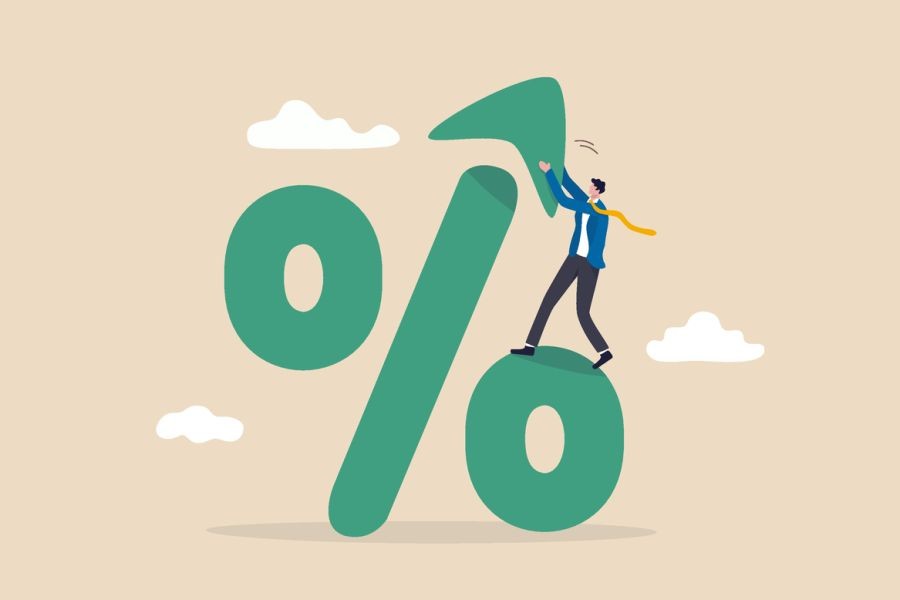As Australians navigate the financial landscape, the quest for high-interest savings accounts has become a focal point for many. In a world where interest rates are often meager, discovering accounts yielding up to 10% interest is indeed captivating. This phenomenon isn't just about financial institutions offering competitive rates; it's deeply rooted in Australia's unique economic circumstances, investment strategies, and regulatory environment.
Understanding the High-Interest Phenomenon
Globally, the quest for higher returns on savings is a constant endeavor. However, in Australia, unique economic conditions and innovative financial strategies have made it possible for some to achieve impressive returns. According to the Reserve Bank of Australia (RBA), the traditional savings account interest rates have been relatively low, often hovering below 1%. So how are some Australians managing to earn significantly more?
The Role of Economic and Investment Strategies
One of the primary strategies involves diversifying investments rather than relying solely on savings accounts. Australians are increasingly exploring alternative investments such as peer-to-peer lending, which offers potentially higher returns. According to a report by the Australian Securities and Investments Commission (ASIC), these platforms can offer returns upwards of 10%. However, these returns come with higher risks, including potential defaults.
Government Policies and Their Influence
The Australian government's policies have also played a role. The RBA's monetary policy, which has kept official interest rates low to stimulate economic activity, inadvertently encourages Australians to seek higher returns through alternative investment channels. Additionally, the Australian Prudential Regulation Authority (APRA) ensures that financial institutions maintain robust risk management practices, providing a relatively safe environment for such investments.
Pros and Cons of High-Interest Opportunities
Pros:
- Higher Returns: Investors can achieve significantly higher returns compared to traditional savings accounts.
- Diversification: Engaging in various investment strategies can spread risk and potentially increase overall returns.
- Economic Growth Potential: Investing in emerging sectors or startup ventures can contribute to economic growth while offering high returns.
Cons:
- Increased Risk: Higher returns often come with higher risks, including the potential for financial loss.
- Market Volatility: Changes in economic conditions can impact the performance of alternative investments.
- Regulatory Challenges: Navigating the regulatory landscape can be complex, particularly for new investors.
Case Study: Success in Alternative Investments
Case Study: RateSetter Australia – Pioneering Peer-to-Peer Lending RateSetter, a peer-to-peer lending platform in Australia, has been instrumental in providing opportunities for high-interest earnings. Facing the challenge of traditional low-interest savings, RateSetter offered a platform where investors could lend directly to borrowers, achieving returns of up to 8-10%.
To achieve this, RateSetter utilized sophisticated credit assessment tools to evaluate borrower risk, ensuring investors were adequately compensated for the risk taken. As a result, the platform has facilitated over a billion dollars in loans, demonstrating the viability of alternative investments in generating high returns.
The key takeaway for Australians is the importance of due diligence and understanding the risks associated with peer-to-peer lending. As with any investment strategy, diversification and informed decision-making are crucial to maximizing potential returns while managing risks effectively.
Common Myths and Mistakes
Myth: "High-interest accounts are risk-free." Reality: Higher returns often correlate with higher risks, including potential default risks in peer-to-peer lending.
Myth: "Only financial experts can access high returns." Reality: With the rise of online platforms, everyday Australians can explore high-interest opportunities with proper research and guidance.
Myth: "Government regulations limit potential returns." Reality: While regulations ensure safety, they don't necessarily cap earnings. Understanding and navigating these regulations can unlock opportunities.
Future Trends and Predictions
Looking ahead, the landscape for high-interest savings in Australia is set to evolve. With technological advancements and the increasing adoption of fintech solutions, Australians will have more avenues to explore alternative investments. By 2028, it is predicted that 30% of all personal savings in Australia will be in non-traditional investment vehicles, as reported by Deloitte Financial Insights.
Conclusion
In conclusion, while the allure of 10% interest on savings is compelling, it's crucial for Australians to weigh the associated risks and opportunities. Diversification, understanding market dynamics, and leveraging technological advancements are key strategies for achieving such high returns. As the financial landscape continues to evolve, staying informed and adaptable will be essential for navigating these opportunities successfully.
Final Takeaway & Call to Action
Are you ready to explore high-interest savings opportunities? Start by researching peer-to-peer lending platforms and alternative investment strategies. Share your experiences or insights in the comments below, and join the conversation on LinkedIn or other finance-focused forums. Stay ahead by subscribing to financial insights newsletters and continuously educating yourself on emerging trends.
People Also Ask (FAQ)
- How can Australians earn 10% interest on savings? Australians can explore peer-to-peer lending and alternative investments, which offer higher returns but come with increased risks.
- What are the risks of high-interest savings options? High-interest savings options often involve higher risks, including market volatility and potential defaults in peer-to-peer lending.
- Are there government regulations affecting high-interest savings? Yes, regulations ensure safety and risk management but don't necessarily cap potential earnings.
Related Search Queries
- High-interest savings accounts Australia
- Peer-to-peer lending risks
- Alternative investments in Australia
- Reserve Bank of Australia interest rates
- Financial strategies for high returns
- Regulations on savings accounts in Australia
- Best investment opportunities in Australia
- Economic trends in Australia
- Australian Securities and Investments Commission
- Future of fintech in Australia






























